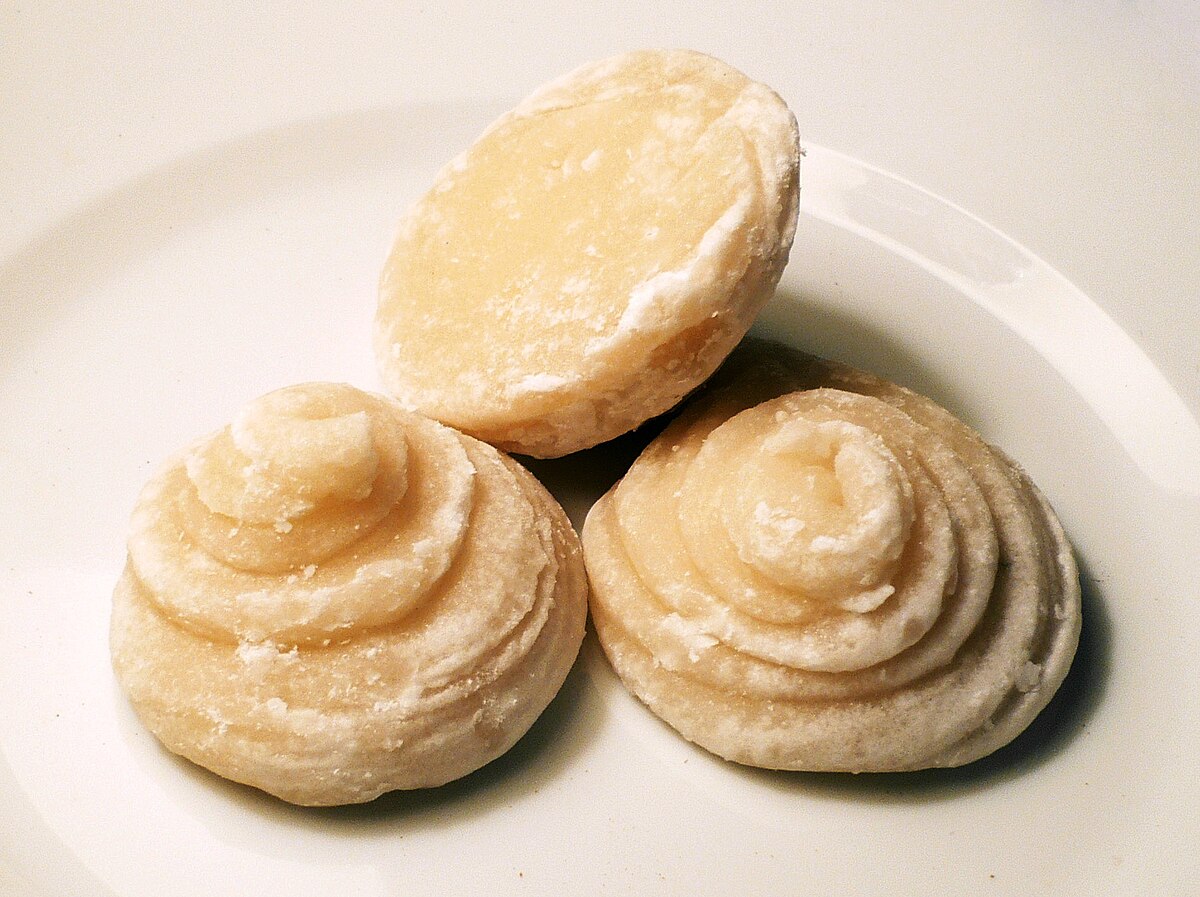What is Jaggery?
Jaggery is a traditional non-centrifugal cane sugar consumed in many parts of the world, especially in South Asia and Africa.
What is Jaggery made of?
Generally, it is made from sugarcane juice that is boiled down and then left to cool and solidify. Jaggery can also be made from date palm sap or coconut sap. The juice is boiled down to make a thick, dark, sticky sweetener.
Jaggery is traditional unrefined Sugar made from either Sugarcane juice. It is also made from Palm or Coconut sap.
What is jaggery used for?
Jaggery is often used as a substitute for sugar in cooking and baking, and is also commonly consumed on its own as a sweet treat.
In South Asian and Southeast Asian cuisine, jaggery is commonly used as a sweetener in desserts and drinks, such as laddoos, chutneys, and tea. Jaggery can also be used as a flavoring agent in savory dishes such as curries.
How does jaggery taste?
Jaggery has a distinct earthy flavor that is often described as caramel-like or molasses-like. The taste and color of jaggery can vary depending on the type of sap used and the processing methods.

Is jaggery healthy?
Jaggery is often considered to be a healthier alternative to regular sugar because it is unrefined, contains more nutrients than processed sugar and has a lower glycemic index.
Jaggery is rich in iron, potassium, and other minerals, and is also a good source of antioxidants. However, like all sweeteners, jaggery should be consumed in moderation as it is still a source of calories.
What are the benefits of using jaggery?
Boosting immunity: Jaggery contains antioxidants that can help boost the immune system and protect against diseases.
Improving digestion: Jaggery is believed to aid digestion and can help alleviate digestive issues such as constipation and indigestion.
Providing energy: Jaggery is a source of carbohydrates, which can provide a quick source of energy.
Promoting skin health: Jaggery contains minerals and antioxidants that can help improve skin health.
How does jaggery compare to other sweeteners?
Normal or regular sugar: Regular sugar is highly refined and processed, and has had all of its nutrients removed. It is a source of empty calories and has been linked to a number of health issues such as obesity and diabetes.
Brown sugar: Brown sugar is regular sugar that has had molasses added back in, giving it a slightly darker color and a more complex flavor. It is still a source of empty calories and should be consumed in moderation.
Molasses: Molasses is a byproduct of the sugar refining process and is a rich source of minerals such as iron, calcium, and potassium. It has a strong, slightly bitter flavor and is commonly used in baking and cooking.
Did you know Rum is made from molasses? Rum production was a huge industry when sugarcane cultivation exploded under exploitative colonial rule across the world.
See below about The Rum Rebellion in Australia & The Bengal Rum Connection
Jaggery: As mentioned earlier, jaggery is unrefined and contains more nutrients than processed sugar. It has a distinct earthy flavor and is commonly used in South Asian and Southeast Asian cuisine.
What are the pros and cons of these sweeteners?
Regular sugar and brown sugar are widely available and convenient to use, but are highly processed and offer little nutritional value.
Molasses is a good source of minerals, but has a strong flavor that may not be to everyone’s liking.
Jaggery is unrefined and contains more nutrients than processed sugar, but may not be as widely available and may have a distinct flavor that some people may not enjoy.
Read more here and here
Which countries still use jaggery?
Jaggery is still widely used in several countries in South Asia and Southeast Asia, as well as in parts of Africa and Latin America.
What is jaggery called in different places?
here are the names of jaggery in different countries and their local scripts:
India:
Hindi: गुड़ (gud)
Tamil: வெல்லம் (vellam)
Bengali: গুড় (gud)
Telugu: బెల్లం (bellam)
Marathi: गुळ (gul)
Sri Lanka:
Sinhala: කැකු (kekulu)
Tamil: பனை வெல்லம் (panai vellam)
Nepal:
Nepali: गुड (gud)
Bangladesh:
Bengali: গুড় (gud)
Pakistan:
Urdu: گُڑ (gur)
Thailand:
Thai: น้ำตาลปี๊บ (namtan pib)
Myanmar:
Burmese: သကြားပြောက် (thagyitpaung)
Shan: ၵိုၼ်းႁူးလီၵ်း (khuu hsue li)
Malaysia:
Malay: gula melaka
Mauritius:
Creole: gato frin
Mexico:
Spanish: piloncillo
Nigeria:
Hausa: ﮏﯿﺮﺠﻴﺎ (Gurjiya)
Igbo: ᱪᱤᱠᱤᱢᱤ ᱦᱩᱳᱰ (Mmanya ocha)
Ethiopia:
Amharic: መጭጭት (Metch)
Sudan:
Arabic: جر (Gur)
South Africa:
Zulu: Gula
Xhosa: Nkululo
Kenya:
Kikuyu: ᎙ᏚᎧ (Mbuti)
Kiswahili: mavuno
Tanzania:
Swahili script: Mchicha
Madagascar:
Malagasy: Rônono
What do they make with it?
Here are some (just to get an idea) dishes made in different countries using jaggery.
India:
Laddoo: A popular Indian sweet made from flour, ghee, and jaggery, often flavored with nuts and spices.
Chutney: A condiment made from jaggery, tamarind, and spices, often served with savory dishes such as samosas and pakoras.
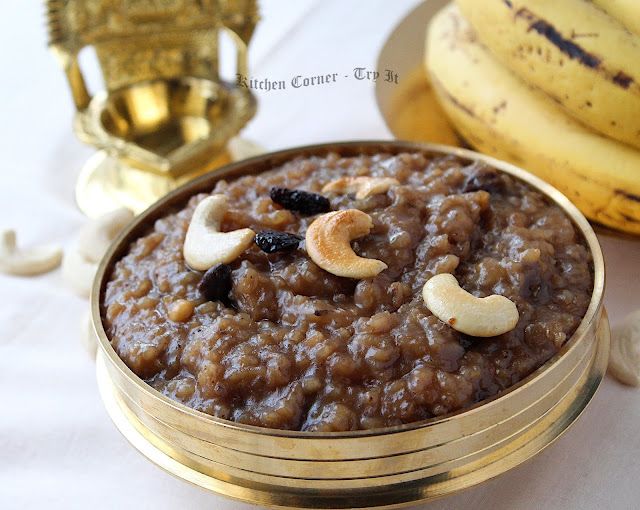
Payasam: A sweet milk-based pudding made with jaggery, rice, and nuts.
Sri Lanka:
Wattalapam: A traditional Sri Lankan dessert made with coconut milk, jaggery, and spices such as cinnamon and cardamom.
Kithul Treacle: A sweet syrup made from the sap of the kithul palm, similar to jaggery in taste and texture.
Bangladesh:
Pitha: A type of sweet or savory cake made with rice flour and jaggery, often filled with coconut, sesame, or other ingredients.
Rosogolla: A popular Bengali sweet made from chhena (cottage cheese) and jaggery syrup.
Nepal:

Chaku: A traditional Nepali sweet made from boiled sugarcane juice and jaggery, often served as a winter treat.

Sel Roti: A sweet, ring-shaped bread made from rice flour, jaggery, and spices such as cardamom and cinnamon.
Indonesia:

Gula Jawa: A type of jaggery made from coconut sap, commonly used in traditional Indonesian desserts such as kolak and es cendol.

Sate Madura: A traditional Indonesian dish made with skewered chicken or beef marinated in a sauce made from gula jawa, peanut butter, and other ingredients.
Thailand:

Khao Tom Mad: A traditional Thai dessert made from sticky rice, banana, and jaggery, wrapped in banana leaves and steamed.
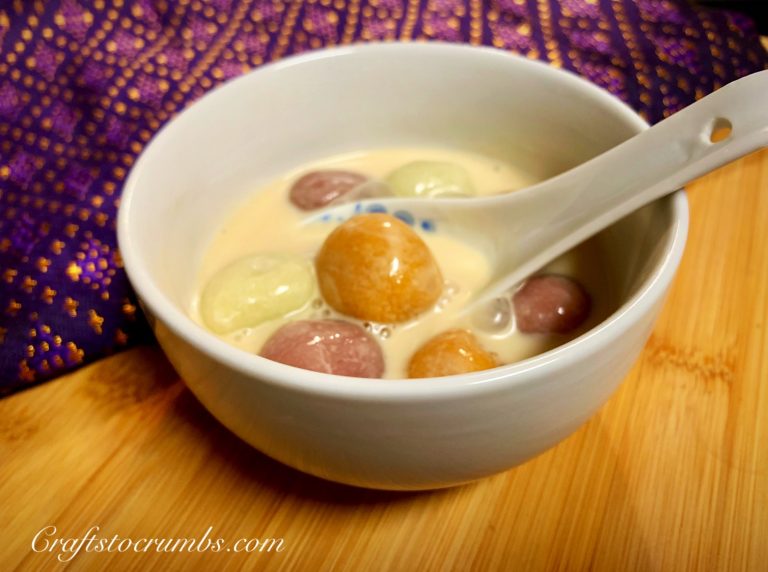
Bua Loi: A sweet Thai dessert made from glutinous rice flour balls, served in a sweet coconut milk soup with jaggery.
Myanmar:
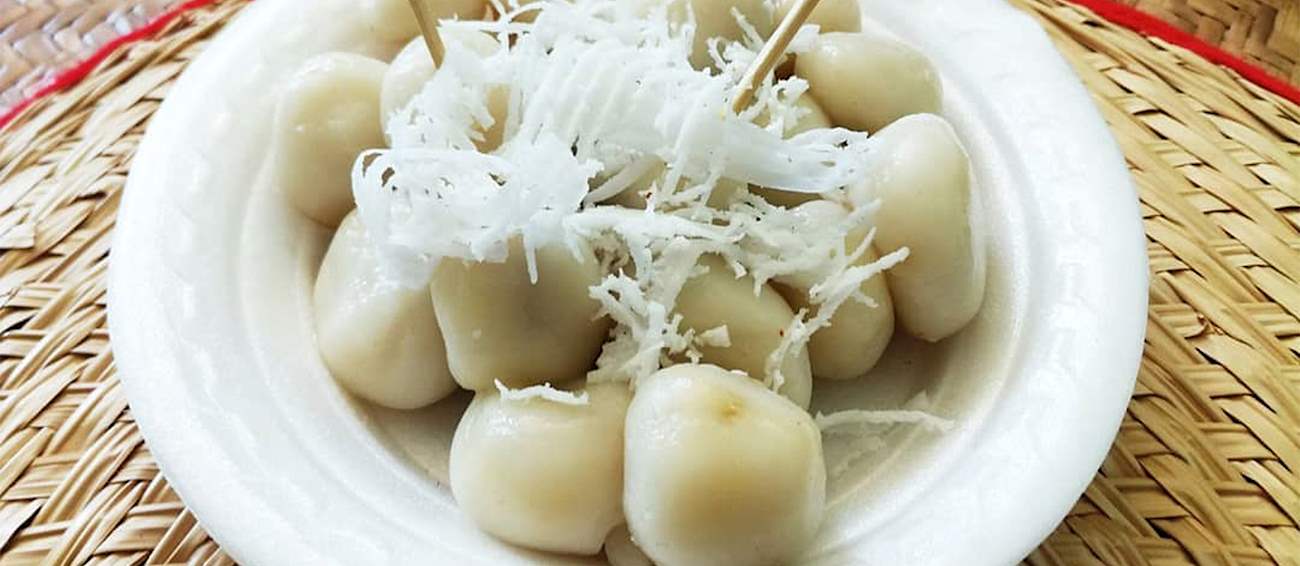
Mont Lone Yay Paw: A Burmese dessert made from mung bean paste, coconut, and jaggery, wrapped in banana leaves and steamed.
Htamein Hin: A traditional Burmese dessert made from glutinous rice flour and jaggery, served with coconut cream and sesame seeds.
Malaysia:
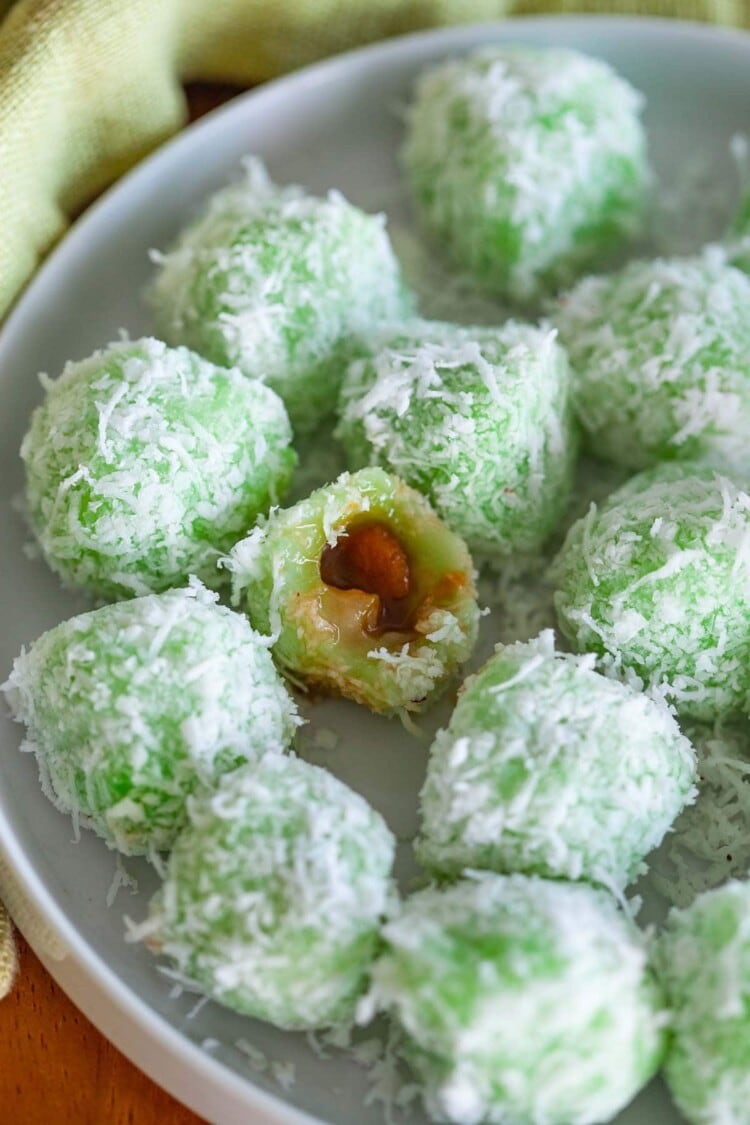
Onde-onde: A popular Malaysian snack made from glutinous rice flour balls filled with palm sugar (gula melaka), rolled in grated coconut.
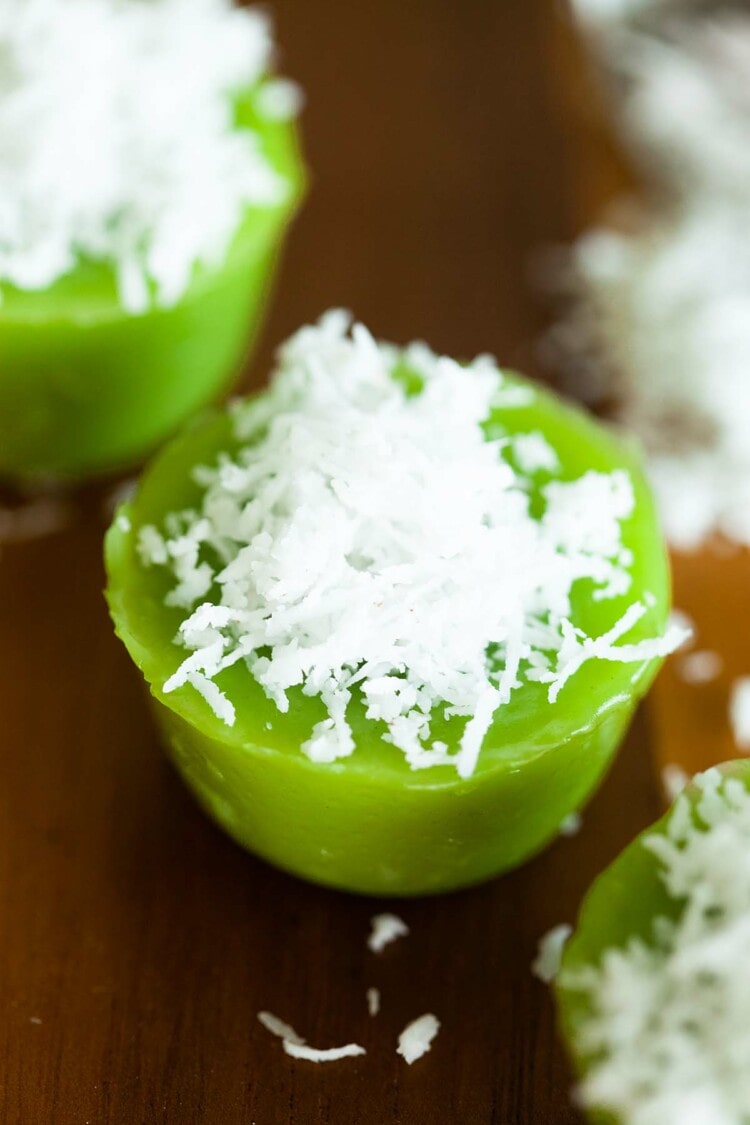
Kuih Kosui: A traditional Malaysian dessert made from rice flour, palm sugar, and pandan leaves, steamed and served with grated coconut.
Mauritius:

Gateau Patate: A Mauritian sweet potato cake made with mashed sweet potatoes, coconut, jaggery, and spices such as nutmeg and cinnamon.
Rougaille: A Mauritian dish made from tomato sauce, garlic, onion, and jaggery, served with rice or bread.
Mexico:
:max_bytes(150000):strip_icc():format(webp)/atole-basic-recipe-with-masa-harina-2342590-hero-01-4d0fde7d14094fe6acb5b0ffbd1207e0.jpg)
Atole: A traditional Mexican hot beverage made from masa (corn flour), water or milk, jaggery, and cinnamon, often served for breakfast or as a dessert.
Cajeta: A Mexican caramel-like sauce made from goat’s milk and jaggery, often used as a topping for desserts such as ice cream and pancakes.
Nigeria:
Gurjiya: a traditional sweet snack made with jaggery, coconut, and spices.
Pounded Yam with Mmanya Ocha: a dish made with pounded yam (a starchy vegetable) and a sauce made with jaggery, onions, and spices.
Ethiopia:

Dabo Kolo: a crunchy snack made with wheat flour, jaggery, and spices.

Genfo: a porridge made with barley flour, jaggery, and milk.
Sudan:
Ful Medames: a breakfast dish made with fava beans, garlic, and jaggery.
Mafroukeh: a sweet dessert made with jaggery, semolina, and nuts.
South Africa:
Koeksisters: a sweet pastry made with jaggery, cinnamon, and syrup.
Chakalaka: a spicy vegetable relish made with jaggery, onions, and tomatoes.
Kenya:
Muthokoi: a traditional dish made with boiled corn and beans, flavored with jaggery and coconut.

Mahamri: a sweet fried bread made with jaggery and coconut milk.
Tanzania:
Zanzibar Mix: a street food made with jaggery, plantains, and spices.
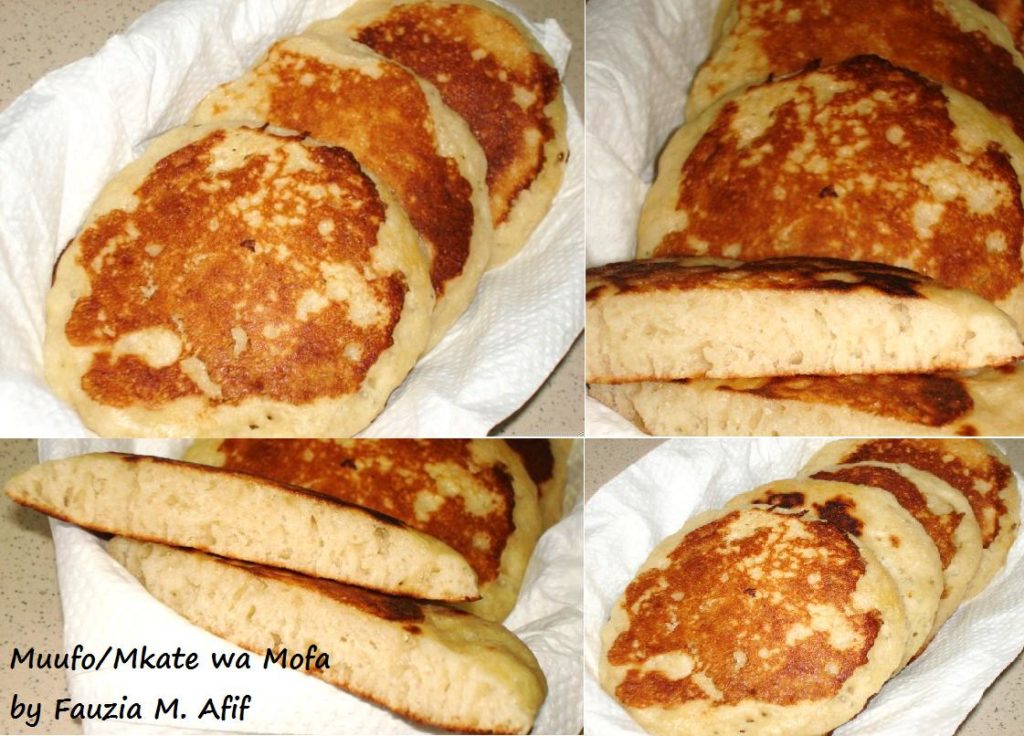
Mkate Wa Mofa: a sweet bread made with jaggery, coconut, and cardamom.
How and when did Indians start using Jaggery?
The usage of jaggery in India can be traced back to ancient times, as it is mentioned in Ayurvedic texts dating back to 800 BCE.
Jaggery was widely used as a sweetener and as a traditional medicine in various parts of India.
In India, jaggery is known by various names depending on the region and language. See above for a list of different names it’s known as.
What is the history of sugar as we know it now?
Ancient Times:
Historians believe that the use of sugar cane dates back to ancient times in India, where it was used as a medicine and a sweetener. In China, people used a type of crystallized honey called rock candy as a sweetener, and in Persia, people used a type of candy made from boiled sugar and fruit juice. The ancient Greeks and Romans also used honey as a sweetener.
Middle Ages:
During the Middle Ages, sugar was a rare and expensive luxury that was only available to the wealthy.
Arab traders brought sugar cane to the Middle East, where it was cultivated and refined into sugar.
Sugar was also introduced to Europe by Arab traders and was used to sweeten desserts and other foods.
16th-18th Centuries:
In the 16th century, European colonial powers began establishing sugar plantations in the Americas, using enslaved Africans to work the fields. The production of sugar increased dramatically during this time, and sugar became more affordable and widely available.
In the 18th century, the process of refining sugar was improved, leading to the production of white crystalline sugar.
19th-20th Centuries:
In the 19th century, sugar production expanded to other parts of the world, including Asia and Africa. The development of the sugar beet in Europe also led to increased sugar production.
By the 20th century, sugar had become a ubiquitous ingredient in processed foods and beverages, and the consumption of sugar had increased dramatically.
The history of sugar is characterized by the spread of sugar production and consumption across the world, from its origins in ancient India to its widespread use in modern times.
Different cultures and regions have used various types of sweeteners throughout history, including honey, cane juice, and fruit juice.
The modern form of crystalline white sugar was developed in the 18th century, and its production and consumption have increased dramatically over the past two centuries.
Where did sugarcane come from?
Sugarcane is believed to have originated in New Guinea and then spread to Southeast Asia and the Indian subcontinent. It was cultivated in India around 325 BC and by the 4th century AD, the process of refining sugar from sugarcane was developed in India.
The Indians were the first to crystallize sugar and produce it in a form that is recognizable today.
Sugarcane cultivation and processing methods were further developed in India, with the first mention of sugar production in Sanskrit texts dating back to the 5th century BCE.
The methods of cultivating and processing sugarcane were refined and improved over time, and by the 8th century CE, sugar was being produced on a large scale in India.
In fact, the Indian subcontinent remained one of the major centers of sugar production for centuries, until the development of European sugar beet farming and refining technology in the 18th and 19th centuries.
What types of sugar are in use today
:max_bytes(150000):strip_icc():format(webp)/Simply-Recipes-Guide-to-Sugar-LEAD-01-bcf6771b5ee249c5b1e6f01c070acf1f.jpg)
There are several types of sugar available today, each with its own unique characteristics and uses. Here are some common types of sugar:
Granulated Sugar: This is the most commonly used sugar in baking and cooking. It is a fine, white sugar made from sugarcane or sugar beets and has a neutral taste.
Confectioners’ Sugar (Powdered Sugar): This is a finely ground sugar that has been mixed with a small amount of cornstarch to prevent clumping. It is often used in frostings, glazes, and dustings because of its fine texture.
Brown Sugar: This is a moist, granulated sugar that contains molasses. It comes in both light and dark varieties and has a distinctive caramel-like flavor. It is commonly used in baking, as well as in marinades and barbecue sauces.
Turbinado Sugar: This is a partially refined sugar that has a light tan color and a slight molasses flavor. It is often used as a topping for baked goods or in coffee and tea.
Muscovado Sugar: This is a dark, unrefined sugar that has a strong molasses flavor and a moist texture. It is commonly used in baking, especially in recipes that call for a rich, caramel-like flavor.
Demerara Sugar: This is a light brown, partially refined sugar that has a coarse texture and a subtle molasses flavor. It is often used in beverages, such as coffee and tea, and as a topping for oatmeal or yogurt.
Caster Sugar (Superfine Sugar): This is a finely ground sugar that dissolves quickly and is commonly used in baking and cocktails.
Panela: This is an unrefined sugar that is popular in Latin America. It is made by boiling sugarcane juice until it thickens and hardens into small cones or blocks. Panela has a deep, molasses-like flavor and is used in a variety of dishes, including desserts and savory dishes.
Molasses: This is a byproduct of the sugar refining process and is commonly used as a sweetener and flavoring agent. It has a strong, slightly bitter flavor and is often used in baking, as well as in marinades and sauces.
Coconut Sugar: This is a natural sweetener made from the sap of coconut palms. It has a caramel-like flavor and is commonly used as a replacement for brown sugar in baking and cooking.
Palm Sugar: This is a natural sweetener made from the sap of various types of palm trees. It is commonly used in Southeast Asian cuisine and has a complex, earthy flavor. Palm sugar comes in a variety of forms, including blocks, granules, and syrups.
What are examples of sweeteners similar to sugar?
Honey: This is a sweet, viscous liquid produced by bees from the nectar of flowers. Honey has a distinct floral flavor and is used in a variety of sweet and savory dishes.
Maple Syrup: This is a sweet syrup made from the sap of maple trees. It has a distinctive sweet, smoky flavor and is commonly used as a topping for pancakes and waffles.
Agave Nectar: This is a natural sweetener made from the sap of the agave plant. It has a mild, honey-like flavor and is often used as a replacement for sugar in baking and cooking.
How did sugarcane spread?
The spread of sugarcane cultivation and sugar production can be traced to the Arab world, where it was introduced during the 7th century. The Arabs were instrumental in spreading the cultivation of sugarcane throughout the Mediterranean region and North Africa. During the Crusades, sugar became more widely known in Europe, and by the 13th century, it was being grown in Cyprus, Sicily, and southern Spain.

